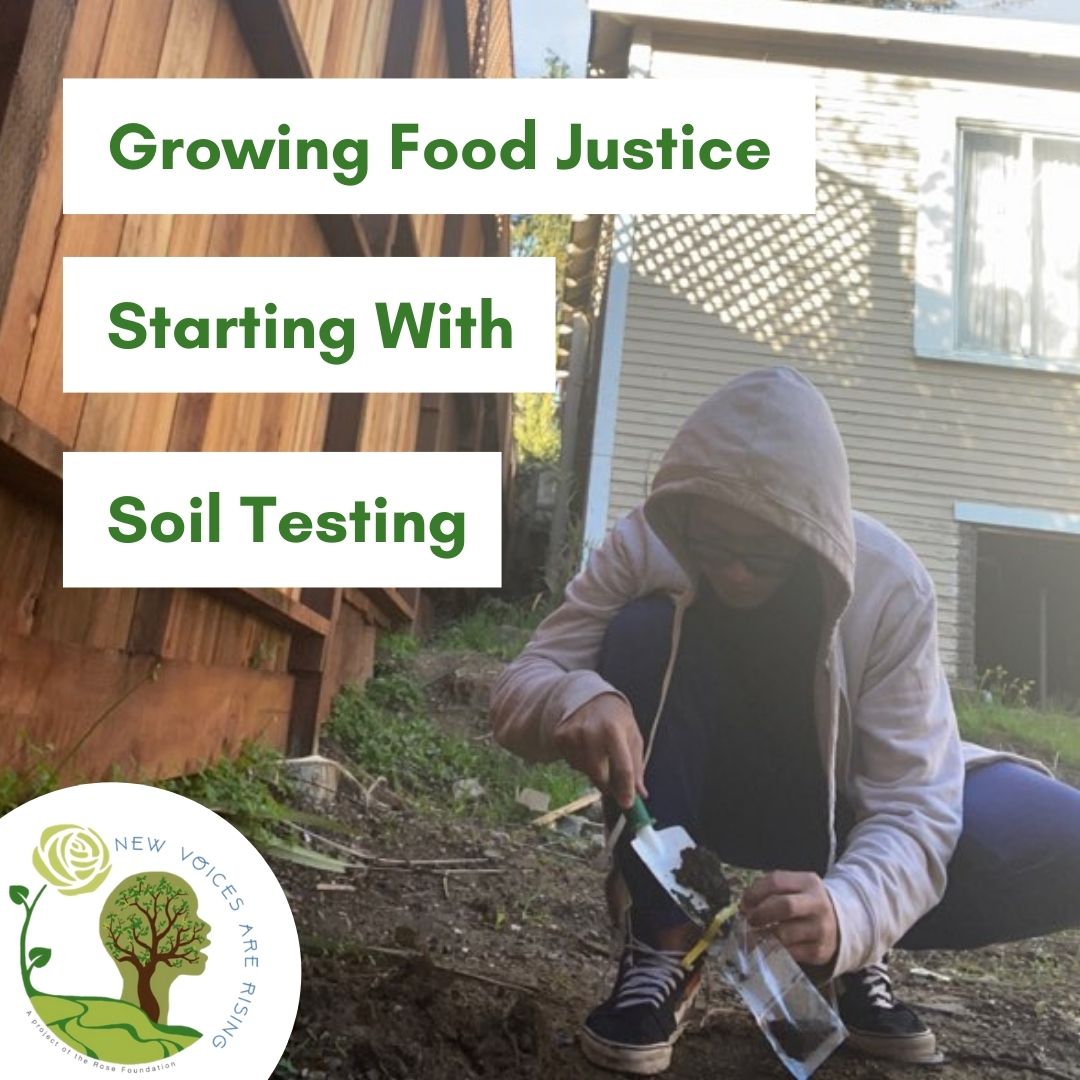Nuevas voces: Cultivar la justicia alimentaria empezando por el análisis del suelo
As this year’s Food Justice Fellow, I am trying to increase the accessibility of fresh and healthy food in communities with barriers to accessing them. Here in Oakland, creating food justice means addressing the food apartheid our communities face — or the ways that people are kept from being able to access fresh, healthy, and affordable foods based on their wealth and neighborhood. We see food apartheid at work when grocery stores are located far away from communities of color and low-income neighborhoods, or when the healthy food that is nearby is too expensive for community members to afford.
As part of my project, I am supporting three other high school students around Oakland in creating their own home gardens to reduce the level of food apartheid we experience. Through this project, students will play an active role in changing our food system and gain access to fresh and healthy foods. And unlike many grocery stores in Oakland, cost will not be a significant factor.
But before we can even start planning the home gardens, we need to do some soil testing for lead contamination. Even though lead paint and leaded gasoline are no longer used, many of our yards suffer from a “lead legacy.” For this part of my project, I am collaborating with East Bay Academy for Young Scientists (EBAYS) to analyze our soil samples. Results from the testing will give us a better understanding of if it will be safe to grow food from the soil around our homes. These results can also help us discuss the effects of prolonged lead exposure on our health and our plants.
When I asked one of the students in my group, Jasmine, how the results might change her perspective on the soil around her, she responded, “It will change my decision on whether I want to use the soil if it’s not contaminated, or figure out a way to remove toxins and then proceed with planting.” In the event we do find out about unsafe levels of lead contamination, I am looking into other options, including programs that will remove and replace contaminated soil for us.
Since I started this project, I have done my own soil testing from outside my home. When I got my results back, I was shocked at how high the lead concentration is in my soil. I’m so glad I now know this and have other options (like raised garden beds) to grow my own garden safely.
In the next few months, I will complete my Soil Testing Workshop with the students, and we will analyze their results. And in the spring, we will start building our home gardens. I am excited to update you on our journey along the way!
